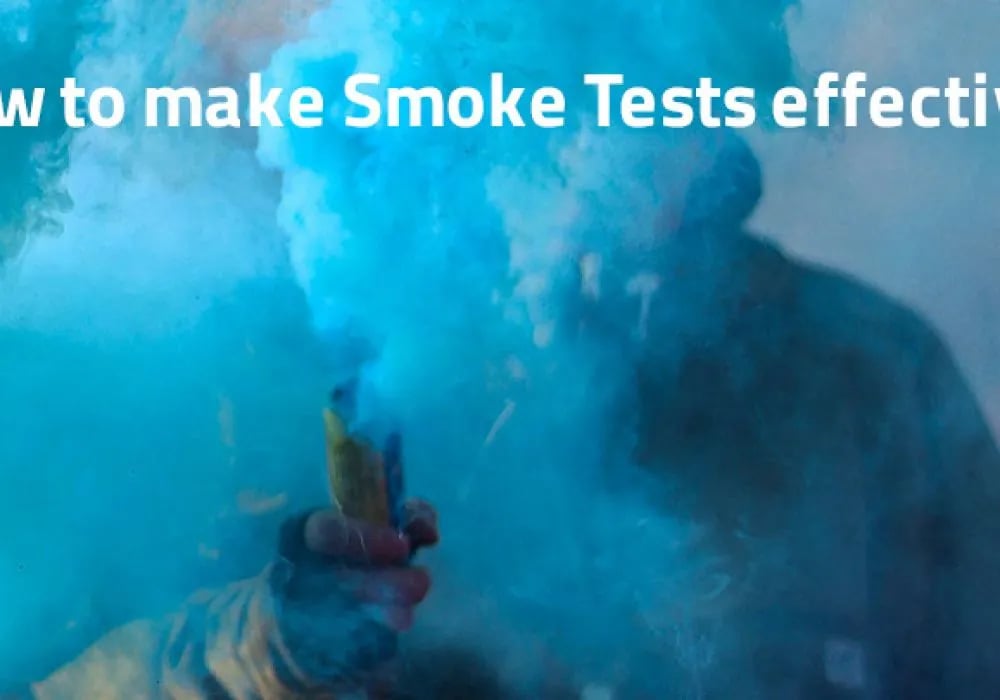Jun 5, 2018
Efficient Ways To Implement Smoke Testing

Assume you have a big idea for a new product or its feature. Prior to investing loads of money and time into it, you need to authenticate it. In other words, you need to be sure that your indented target is just as excited about the idea as you are.
So, how can you authenticate the ideas or your product feature backlog without wasting assets?
By running a smoke test.
What does Smoke Testing mean?
Smoke Tests are a kind of non-extensive and fundamental software testing practice, where you put the code developed so far to test the vital functions of a system, to determine if key functions of the software work correctly or if the system crashes.
If it breaks, you fix the system because it is in no way, ready for more technical and extensive testing. If it didn’t, then it indicates you’re on right path and that the essential aspects the system is designed to do, are working. Smoke tests are intended to check that the most critical functions work.
How to make Smoke Tests effective?
Now as we have recognized the fundamentals about Smoke Testing, let’s take a look at some efficient ways to implement the smoke test to authenticate features of your product and maximize the value you get from it.
1. Through early stages of product or project, usage of smoke tests is advised: Characteristically, smoke tests help you to find the easy but critical bugs of the component that prevent your team’s development. And these problems generally arise during the initial few Sprints of the project, or when it is the starting phases of building a new product.
You have other testing methods that can offer better value during the later phases of your product or project development.
Check out our Ebook- Manual Testing Vs Automation Testing
2. Test case repositories should be maintained properly: It is a good practice to record your smoke tests. And it will provide you solid and reliable data. The likelihood is that most of your team is working on projects that bring in new additional features to or alter an existing product. It will be of enormous help if you all maintain a test case repository.
When you do this, test planning becomes smooth and easy. You can refer to the relevant test scenarios without having to go through the laborious and long process of creating new test cases from scratch.
3. Automate smoke tests wherever possible: The earlier you find a defect, the cheaper it is to mend it. That is why it is essential to automatically implement a smoke test each time a build is finished.
Ample automation helps in getting through some structural testing up to 50 times faster, thus saving the team loads of time over the long run.
4. Smoke tests should not run more than an hour: The objective of Smoke tests is to capture those bugs that during the initial stages of a project thwart the development. Your goal should be to get the developer to recommence development as soon as possible, without having to wait for extensive and complex testing phases.
The duration of Smoke Tests should be around 30 minutes, but not more than an hour. Longer than that and something is not right. The problem might be with code’s quality or with the simplicity of your test cases.
5. Use smoke tests to decide whether to proceed for advance testing of code: Smoke tests can help you deliver a quick reality check of your code quality before you put it in for thorough testing. If the most essential tasks are not finished easily and if the code is not passing the simplest tests, then you don’t have a much possibility of going through a fruitful test cycle. So use swift Smoke Tests to decide if your code is acceptable to proceed to the next phase.
Consider Smoke Tests as a regular part of your software testing process. Your team will be better with it than without.
We, at BugRaptors, believe that there are no shortcuts to success. We perform smoke testing extensively and effectively to determine the key functions of the software work correctly as per the business requirements and end-user perspective.